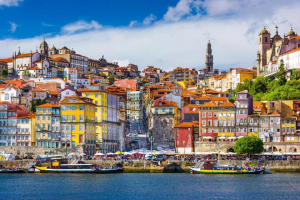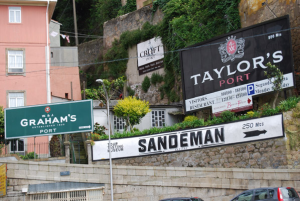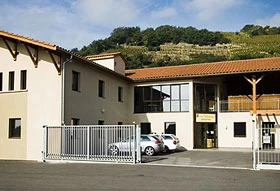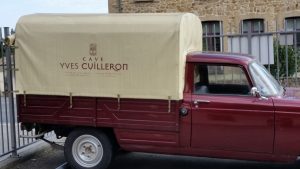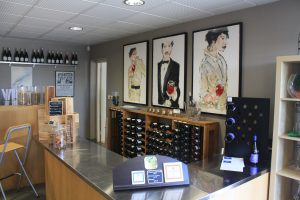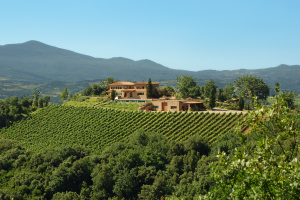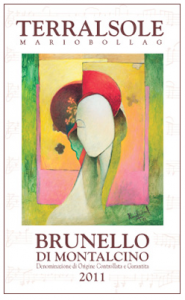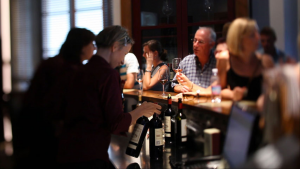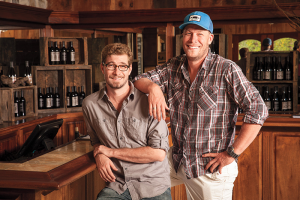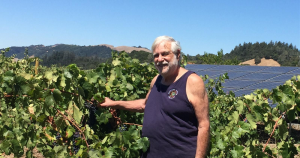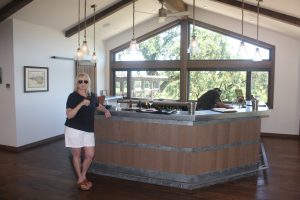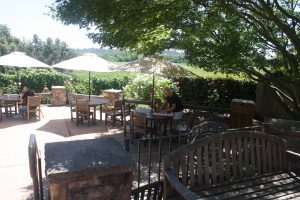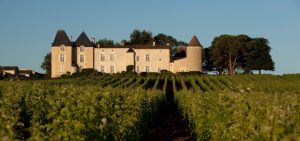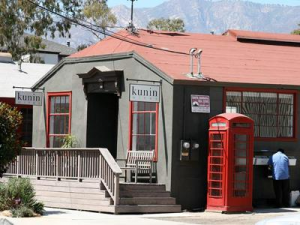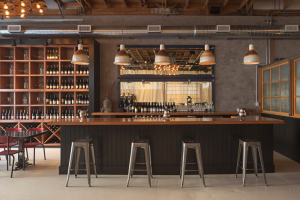In the north of Portugal you’ll find the city of Porto, on the northern shore of the Douro River, where it debouches into the Atlantic. The city’s name has an interesting history. On the southern shore there is today a town called Vila Nova de Gaia, but it Roman times it was Gallia. As the town prospered, the Lusitanians (as the Portuguese were then known) needed more room, so they built a port, or portum in Latin, on the north shore – contemporary Porto. Today the country takes its name from these twin cities: Portum + Gallia = Portugal.
Porto as seen from Vila Nova de Gaia. Photo courtesy of the Boston Globe.
And as wine lovers know, it also gave its name to a wine we call Port. That fact alone makes Porto worth visiting, but it has many other attractions as well. Among these are the Cathedral, the Eiffel bridge (same architect as Paris’ tower) also known as the Luis I, the Clerigos Tower and the Douro Waterfront. While there is much excellent dining around the city, a particular favorite is on the waterfront, the wonderfully named La Case da Filha da Mae Preta or The House of Black Mae’s Daughter. If you go, order the giant prawns in garlic sauce; they’re not on the menu but it’s the best dinner you can have there.
And of course, there’s Port to be tasted. When you check into a hotel, after you sign the register, they hand you a glass of Port. Now, that’s civilized!
The wine is pressed upriver and shipped in tanker trucks to the wineries, or lodges as they are known there in Vila Nova de Gaia. [In the past they came down river on boats called rabelos. These can still be seen in the river near the south shore, but are no longer in use.] In Gaia, they are aged in casks, barrels or bottles, depending on the style of wine. You can taste away at the Instituto do Vinho do Porto, which is the counterpart of the solara or tasting room in Lisbon.
If you are on the Porto side in the evening, you will see the Gaia hillside light up with enormous signs of all the Port houses you ever heard of…and a few you haven’t. Many of them have tours and tastings, during the day of course. Perhaps the best tour is at Sandeman’s which is also the easiest to reach. There is a small bridge (not the high Eifel one) that you can walk across the Douro. Turn right on the Gaia side and Sandeman is a few hundred feet down the road. You’ll get a great view of Porto as well. Your tour will explain the differences among dry, ruby, tawny, colheita, LBV and vintage ports and then you’ll get to taste some of them.
Photo courtesy of Monaloca.
Other lodges are less easy to reach but the consensus position is that the wines are better. Each has certain attractions. Ramos Pinto has a museum of their history. Calem, one of Lucie’s favorite Ports, offers a fado (Portuguese blues) performance along with your tour. The more famous names, such as Grahams and Taylor Fladgate, focus pretty much only on the wines. Many require appointments. Some have restaurants. It’s a good idea to read up before you go wine tasting there.
Another good idea is to remember that Port is a fortified wine, meaning that it is enriched with neutral grain brandy. That makes it quite alcoholic, typically 20% or more. That’s less than in whiskey but a heck of a lot more than in table wine. So don’t plan too many tastings in one day. Enjoy the beauty of your surroundings so you get the most out of Porto and its twin city, Vila Nova de Gaia.
